
The effects of poor posture and modern living gets a lot of air time these days. Central to this often is mention of rounded, internally rotated shoulders and the effect that this has on everything from breathing to Olympic lifting performances. I recently completed the Yoga Tune Up® Hips Immersion with Trina Altman. One of the take-aways from the immersion was that strengthening of the external (or lateral) rotators of the shoulder joints has now become a regular feature in my own training and in the classes I teach.
The shoulder, which is in fact made up of four joints, is a complex joint. This blog will focus on external rotation of the glenohumeral joint. This includes not only the muscles, bones and ligaments but all of the myofascia and nervous system tissue that is interconnected to the rest of the body. When the body moves, it moves as a whole – our nervous system didn’t name each muscle, tendon, nerve and ligament. Every movement is a whole body movement. Therefore, building awareness and strength in one area has an effect on the entire body. I am not going to wander too far down the rabbit hole that is the movement of the body but it’s safe to say that there is much more to learn.
The prime muscle groups that externally rotate the glenohumeral joint are the posterior deltoid, infraspinatus, and teres minor. The antangonists to this direction of movement include the anterior deltoid, latissimus dorsi, teres major, subscapularis (the only one of the rotator cuff group that internally rotates the shoulder joint) and the pectoralis major. It is clear that the size and number of internal rotators exceeds the external rotators. Couple that with the fact that the external rotators of the glenohumeral joint are out of direct line of vision as they are located on the posterior aspect of the body and you can see how there may be some amnesia about these important workers. According to Davis’ Law1, soft tissue responds to stress by laying down more tissue and becoming shortened and more adhesions between the various layers. In simple terms that can result in shortening of the internal rotators and weakening over time of the shoulder external rotation muscles. This leads to a dysfunctional shoulder, a grumpy nervous system and frustration in treating pain in a specific area without dealing with the cause.

So, what can we do to initiate change and get to a “new normal?” In part one of this post, we will outline myofascial work using the Yoga Tune Up® Therapy Balls. Then to follow up, the second part of the post will describe a simple sequence using Yoga Tune Up® poses that can be integrated to daily practices to strengthen the shoulder joints and external rotator shoulder muscles.
Posterior Deltoids
We begin by seeking out some blind spots in the posterior deltoids. To do this, use a toted pair of original therapy balls at the wall. Place them in a vertical position on the back of the shoulder and adjust your body weight to the desired effect by moving your legs away from the wall. Once a trigger point is located, apply sustained compression for 60 seconds, before bending and straightening your knees to strip the muscle fibres. Then move left to right to crossfiber the tissues and tease apart any adhesions. Perform all of these techniques mindfully and enhance everything that you are doing by using the most powerful technique at your disposal – your breath. See also Sequence 12: Shoulder to Elbow in The Roll Model book by Jill Miller for more details on “Shoulder Shrink-Wrap” and pay specific attention to the posterior aspect of the deltoids.
Infraspinatus and Teres Minor
Staying at the wall, remove one therapy ball from the tote. Place it between your right shoulder blade and the wall. Again, sink your weight against the ball and allow yourself to feel the tissues of the infraspinatus and Teres minor. The infraspinatus, as the name suggests originates from the infraspinatus fossa of the scapula, and the teres minor from the upper two-thirds of the lateral border of the scapula. Both insert in to the greater tubercle of the humerus. These are two of the four rotator cuff muscles whose main function is to stabilize the glenohumeral joint. You use these muscles also when pulling the cord to start a lawnmower. They should be strongly engaged when performing Downward Facing Dog for example, but this often is not the case. Using the therapy balls is a great way to educate movers and Down Dog aficionados about optimal muscle engagement towards a safer and more effective pose.
By physically locating this dynamic muscle duo with the Yoga Tune Up therapy balls, you bring your awareness to the area. You enhance your proprioception and increase the number of proprioceptors that are active. Your nervous system and your shoulders will thank you. Repeat the three techniques that you applied for the posterior deltoid in the same manner – sustained compression for 60 seconds, then stripping and lastly crossfibring. Repeat on the left side, noticing any difference between left and right. If you have been using the therapy balls for a while, try and really slow down the movements and allow your breath and your nervous system to guide you to the spots that require attention at a given moment. Change how you look at things, and the things that you look at change.
1 Tissue Provocation Therapies: Can healing be forced? The Laws of tissue adaptation and therapies like prolotherapy and Graston Technique. First published 2012, updated January 10 2017; Paul Ingraham; painscience.com


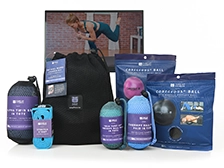
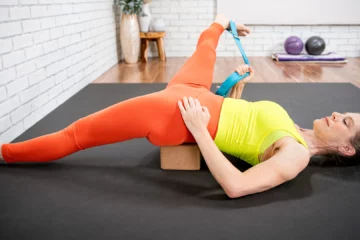
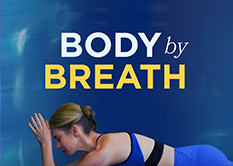
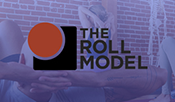
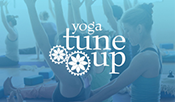


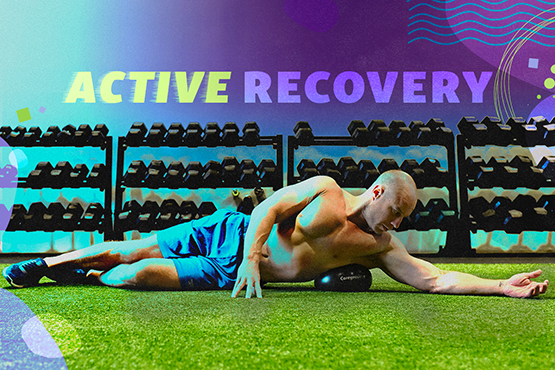
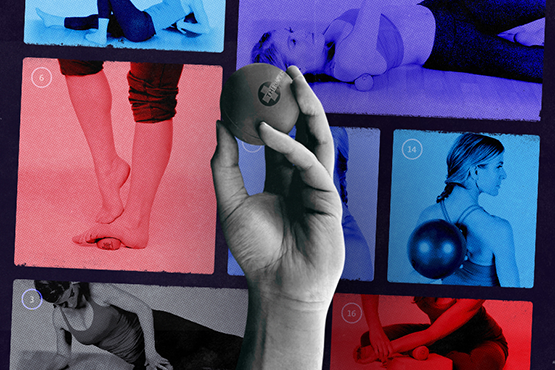
The idea of using therapy balls to propriocept areas of the body that may have been “forgotten” is an interesting concept. I like the idea that there is this kind of amnesia that develops when we can’t physically see an area of our body and therefore disconnect from it. The roll out is simple and quick to bring these areas back into awareness!
This article really makes me curious about the natural imbalance of external versus internal rotators. Are we always meant to be stronger with internal versus external rotation. Is it from crawling on all 4’s? Or pulling ourselves up into the trees? Thank you for the therapy ball tips, couldn’t we also use it on our internal rotators to loosen them up or is that counter productive?
Thank you for breaking down external rotation of the shoulder as well as why pain develops over time. These practices have been a huge resource in alleviating tension and pain along the rotator cuff!
Very useful to gain shoulder mobility and reduce pain in this area.
Merci pour ce texte qui valorise l’épaule comme partie importante du tout qu’est le corps. Les exercices sont faciles à appliquer et bienfaisants pour des épaules en santé…
Great article- as someone who holds a lot of tension in my shoulders- this is personally very useful and the examples provided give so much context to the motion!
Great techniques. I will use it on the wall to keep in good health my shoulders. When you say that every movement move the whole body, it is important to remember it in every day life.
Je me souviens très bien en 2007 lorsque j’ai commencé à donner des cours, je répétait continuellement aux nouvelle mamans l’importance d’une bonne posture et la conscientisation de bien étirer la colonne. De cette façon mon cerveau assimilait continuellement cette information et ma posture c’est grandement amélioré. Un matin à mon travail, un client régulier m’a demandé si j’avais eu une perte de poids considérable…. mais non, c’était uniquement la façon de tenir mon corps qui donnait cet impression. Mes douleurs aux épaules et au cou ont diminué considérablement et mon énergie restait stable toute la journée.
“Every movement is a whole body movement.” Brilliant! It’s easy to fall into the trap of thinking about muscles, or even muscle groups, in isolation, but this post helps explain why disfunction in any one body area can impact other areas of the body. Thanks for the great information and the ball rolling suggestions!
My shoulders need so much self care. I noticed when we were in YTU training and l could not do shoulder flossing. Am going to spend time on my shoulders and get them moving well without pain.
I am currently in the Yoga Tune Up training and we spent time on the shoulder today. I just wrote about the relationship between slumping shoulders and the effects not only physically on weak posterior shoulder muscles but also on our feelings of confidence and empowerment. Spending time exploring the shoulder joint with balls and strengthening exercises like matador circles, or epaulet arms circles is not only freeing for our shoulders so they can support us, but improves our posture, and helps us find the confidence to stand up to to the challenge of being who we are and believing in our own potential.
Thanks for all the detail in the article. Seems like a wonderful way to get to learn on your own anatomy to be able to better teach it to students as the shoulder is so involved with so many moving parts and muscles.
Great article! I’ve been wary of rolling the deeper shoulders, afraid I might make matters worse. Thank you for the clear instruction. Now I know where to start!
Thanks for the simple breakdown of the half the rotator cuff muscles when I use my YTU balls before I start that lawn mower!
Good article and good explanation of the shoulder anatomy. Thanks for reminding us to allow our breath to guide us.
Thanks for going in depth to get to the root of the shoulder. Great reminder that there is a lot going on in the 4 joints of the shoulder.
Thank you,
Susan
Thanks Miriam for all the explanation and details about external rotation and shoulder. Definitly, we don’t take much time in our postérior muscles. Bring awareness in those area.
Great sequence of roll techniques and very clear explanation. Thank you!
Therapy Balls have been so important for me in healing a recent shoulder impingement. I unfortunately did not spend as much time on the other shoulder which is not super tight and cranky…. Love the reference to Davis Law. Going to apply this all to both of my shoulders and appreciate the reminder!
Thanks Miriam for the great information. My take away is how useful it is to know the anatomy and correlate it to what is going on in my body. When I take time to sense the location of the muscle(s) I feel a greater proprioception happening especially for muscles that are not in my sight line. Having had a shoulder injury I know the difference it makes to consider the big picture of the interconnectedness of the human body and how a muscle not right at the shoulder can still bring shoulder relief.
Such a critical article for anyone who types at a desk! All I feel like doing after hours at a computer is engage my rhomboids to broaden across the chest but this really pinpoints the rotation as one of the key areas that people need to focus in their counteractive, self-care regiment. This was the first time I actually thought about the sheer “size and number” difference between the internal and external rotators.
Nice article on the muscles that initiate external rotation of the shoulder and how using the YTU balls on these muscles enhances proprioception of these muscles, while breaking up adhesions to bring balance to our shoulder joint. I’ve just begun my immersion into YTU trainings and the movement of the shoulder and hip joints as they relate to yoga and daily life are my focus. Your article excites me to learn more!
I appreciate the relevance and thoroughness of this article in explaining this issue as well as the solution being presented. I find that doing the movement slow works best for my shoulders.
Thank you Miriam!
You give a great explanation of internal and external shoulder rotators and how to maintain a healthy balance between them. I appreciate the reminder of the Shoulder Shrink Wrap sequence.
I’ve personally noticed a weakening in the posterior shoulder muscles and always associated it with my protracted and forward focused work habits. Given that the external rotators are also fewer, smaller and hidden, it’s no wonder why so many people are having issues with their external rotators. Thanks for the suggested treatments. I’ll have to try to add these techniques to my practice.
I love how your instructions are simple yet concise. And appreciate how you explained the shoulders and the muscles that attach to the shoulder joint.
What a fantastic detailed article about the shoulders. I love using the YTU balls to draw awareness and increase proprioception in this area. I am in “ouch” in these areas so it’s good to know why.
Thank you, Miriam!
I found this description particularly helpful and concise:
“It is clear that the size and number of internal rotators exceeds the external rotators. Couple that with the fact that the external rotators of the glenohumeral joint are out of direct line of vision as they are located on the posterior aspect of the body and you can see how there may be some amnesia about these important workers.”
It is often tricky to relate to places outside of our direct line of vision, isn’t it? I’m always amazed when I ask students to locate their shoulder blades…it’s uncharted territory for many!
You’ve laid out such a helpful way to explore what could otherwise become a no man’s land.
These are some very helpful techniques that I can not wait to share with a friend of mine. Also, with my mother I have noticed that her shoulders are very pronated most of the day.
Really interesting, we did that today in our training and talk about wich one should be better to roll firt, front of back, since they are you relatedto bad posture and emotion
Thank you for the insight on a matter which I may find useful in my own issues with my shoulders
This was incredibly helpful to me because my mother has struggled with a “frozen shoulder” for a long time. I introduced her to some strengthening exercises I knew and to this yoga tune up technique and she was stunned! She had never even felt the muscles she palpated when working on the wall before, and yet they were the ones which caused her to feel so much other pain. Incredible what happens when we start to really understand these bodies we walk around in!
I really appreciated this clearly written article- a fantastic summary of the rotator cuff, the opposing forces and some new ideas to try with this ongoing issue.
This is so helpful to get to know anatomically what I am working on Yoga Tune Up® Therapy Balls and poses. Now I have better understandings what really happening my body.
“ If you have been using the therapy balls for a while, try and really slow down the movements and allow your breath and your nervous system to guide you to the spots that require attention at a given moment.” This was a great reminder to me. I often do things in rush so this was great reminder to take time to bserve my body.
It’s useful to know specific techniques for dealing with a condition that is omnipresent in today’s society. To judge from the other comments, many readers have been helped by the author’s description.
Great article! I am using YTU balls to try and correct my internally rotated shoulders. Thank you for being specific about what to roll and how to get there!
Thanks for your perspective on the frustration of dealing with the shoulders and the curious mis-match of muscles responsible for internal and external rotation. Truly a lot of muscle activity just to wave “hi”.
This is a great look at the particulars of external rotation of the shoulder. I find that many of my students “chest thrust” instead of turning on the shoulder, leading to injury and body blind spots. These ball exercises are great ways to turn on awareness of this behind the body spot!
Great article, and thank you for the sequence to roll out the Infraspinatus and the Teres Minor.
Yes the shoulders it is complex and thank you to summarize the whole
Hi Miriam, thank you for this article. I experienced wonderful feelings of freedom after rolling Posterior Delts and even more on Infraspinatus and Teres Minor. It is exactly how you say: Change how you look at things, and the things that you look at change. Tatjana
I love your quote: Change how you look at things, and the things that you look at change.
Today during the training, we talked a lot about external shoulders rotation and how it’s important because to get this awareness in our self massage routine. Just to be conscious that we are always living with internal shoulders rotations because of everything (computer, driving, bad habits…) and there are many way to fix it! thanks!
I just did a lot of Shoulder work today in YTU level 1 training. I found it interesting to consider the posterior deltoids. I knew thought about blindspots in that area. If you think about it with technology playing such a big role in life these day the anterior deltoid are being shortened while the posterior is getting lengthened. Great inclusion the of the posterior deltoid in the roll out.
Your breakdown of the muscles of the rotator cuff as well as the muscles that externally rotate the humorous vs the muscles that internally rotate it is so helpful! The external rotator muscles are outnumbered and thus internal rotation is already favored even before we add in the typical activities on a modern-day person (read computers and texting)!
It make sense to roll out the infraspinatus and teres minor as you suggest. I am additionally curious about the effects of also rolling out the shortened muscles responsible for internal rotation. I wonder if rolling out these muscles would allow for some additional length, in turn giving the infraspinatus and teres minor an equal chance to do their job?
Important to consider too is the relationship between scapular positioning and stability and how well the rotators of the humerus function. It’s imperative to remember that distal muscles and joints are almost always dysfunctional if the promixal joints or muscles along the same fascial chain are dysfunctional.
It is important to train the functional strength of the teres minor and infraspinatus, but more often than not I see a very isolated approach to strengthening these muscles, usually in the form of a banded-resisted or cable external rotation with the elbow tucked up against the ribcage.
There is a time a place for that, but it doesn’t necessarily address the poor scapular control. Check scapular mechanics before going after the rotators themselves. They’re often just along for the ride, not necessarily the cause of the problem.
I love the suggestions for rolling out the external rotators! There is so much to feel in this region, yow! Strengthening my external rotators was an essential part of healing a tear in my biceps tendon and I’ve maintained attention to strengthing this area to keep my shoulders happy.
Well written article. Can’t wait to read part II! Couldn’t agree more that in this day and age, it seems almost every single human could really benefit from this work. I feel it so much harder to find people out there without the forward head forward shoulder posture.
Wow – great article! I am always trying to better understand external rotation in my body as well as from an anatomical standpoint. I understand why our day to day movements make external rotation difficult, but this article illustrated so well the effects these daily movements have on our muscles, joints, and tissues in the area. I always focus on how my external rotators are weak but failed to make the connection with the gradual shortening of the internal rotators. This article has given me a broader focus in correcting this misalignment.
Ha. So I meant biceps brachii… we aren’t dealing with dinosaurs here today. Phone corrections. Haha
I have been working on this the past couple months. An excess of yoga without any alignment of external rotation, and a habit of driving with my left arm on the top of the wheel in constant internal rotation as I drive left me with some sort of strain or sprain. I don’t have access to a doctor so I have been experimenting with movements. It’s working. I stayed away from chaturangas for a while. I’m using bands to try to strengthen my external rotators mentioned above and reminding myself to stay in external rotation. I drive holding the wheel that way now too. It still has a dull pain what feels like in between the lateral deltoid and biceps brachiosaurus. I’m hoping I learn more to find this spot.
So many gems in this post! Like on of the other commenters, I had not ever considered that the internal rotators outnumber the external rotators. I also appreciated your clear explanation of how working with the therapy balls enhances proprioception, and the reminder that every movement is a whole-body movement – nothing works in isolation and our nervous system doesn’t separate everything out like we tend to. Thank you.
Thank you so much for this post. I worked on exactly same muscles on training, but as soon as I came home completely forgot how to locate all the muscles. After reading the article I could experience again that fantastic pain.
Thank you so much for this post. I have done those excersises in class and it was pretty straight forward to find the spots but coming home realized it’s all forgotten. Having read your post I could experience again and better understand the positioning of the balls.
So good to read the word proprioceptor used for the rotator cuff.i teach rehab exercises in a physio clinic and always think of proprioception and balance forgetting that we have them in all joints.
What a fantastic and detailed post. I have had many shoulder issues from weight training over the years and have found working with the tuneup therapy balls has alleviated most of my issues. My issues mostly came from the Infraspinatus and Supraspinatus so these exact rolling techniques have given me more relief and repair than i would have ever imagined possible.
Having it pointed out that the amount of internal rotator muscles is superior to the external rotator muscles was, for whatever reason, a “Oh, yeah!” moment.
I’ve been fighting to recover from a complicated rotator cuff tear that has lingered from years of compensation. Having learned the tools I need to heal, what I need now is simply patience and practice 🙂
I love how you differentiated all the inter-workings of the rotator cuff. So many times I hear people say, “I have an old rotator cuff injury.” And my immediate thought is “which one?” Using the YTU balls you can help bring more awareness to these areas, as most people are unaware that they are weaker and more rounded forward. I love Matador circles and floating angel arms for this. Great post!
I loved the Yoga Tune Up balls usage to draw our awareness to the external rotators of the shoulder and to increase our proprioception in this area. I will be sure to teach this to my clients. It is one thing to show someone how to strengthen the external rotators, but it is a whole new ball game if they are aware of where the muscles run, and where they are targeting the strength training. Thanks for bringing this to my attention!!
I like the idea of WAKING UP and bringing ATTENTION to our external rotators by using the Therapy balls. I also loved hearing about how many muscles our external rotators are up against. I’m going to bring this point to my classes because knowing this, makes me want to work harder to strengthen my external rotators so I don’t round my shoulders based on my posture.
Thank you for this blog post. I’m 6ft tall and have always struggled with my posture. I find my shoulders to be very tight and although I practice yoga regularly, this article provided a deep understanding of how the shoulders are so complex and where I should target with the roller balls. I look forward to trying with such a clear understanding of how to do so and what effect it has on my body.
Thank you for this blog topic – being a full-time “desk-sitter” for my work, I am intimately aware of the tendency to roll the shoulders forward and practice poor posture. But as a dancer and yoga instructor, I also actively strive to counteract the rolling forward of the shoulders, and I work to activate the external rotation as much as possible. I appreciate the techniques listed and will incorporate these to continue to improve the balance of shoulder engagement and hopefully avoid the “dysfunctional shoulder”!
a link to a video would be very helpful…as you mentioned, the shoulder is a complex joint and the angles and trigger points are hard to see let alone position. Thanks